The secret underground life of trees
The research of Dr. Tamir Klein is revealing a forest underworld beneath the soil
Features
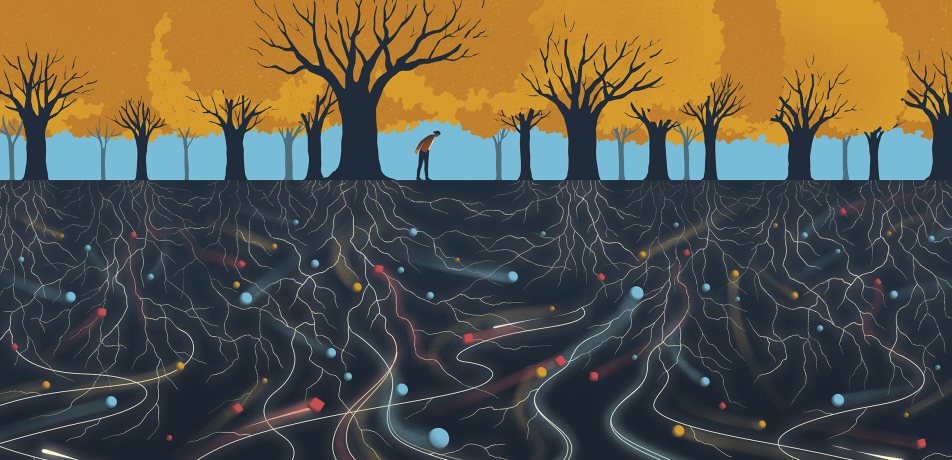
Illustration: Davide Bonazzi
There is an underground trading network going on, deep in our forests, but it’s not between humans. Scientists have uncovered extensive below-ground networks formed between trees, fungi, and bacteria, which provide each species with the nutrients they need to thrive. A leading expert in this area is Dr. Tamir Klein of Weizmann’s Department of Plant and Environmental Sciences. His goal: to elucidate the underground network of collaboration in the forest—the fungi and bacteria in the soil that create an intricate community.
“Research on the forest underworld is significantly changing our fundamental understanding of ecology and non-animal organisms,” says Dr. Klein.
Rather than competing with each other as was once thought, organisms beneath the ground are doing something entirely different: cooperating. Large networks of symbiotic fungi, bacteria, and trees are supplying each other with the resources they need to thrive. Moreover, far from being simple individualistic organisms, plant species actually communicate with each other using a specific chemical language.
Dr. Klein and his group are monitoring the exchange of water and carbon between the forest trees, atmosphere, soil, and the fungal species attached to them in order to gain a more complete picture of forests and their role in the environment.
Highways and byways
In a vast interconnected system not unlike a system of highways, interchanges, and country roads, the air, trees, and soil are in a constant state of communication and interaction. First, trees have access to carbon in the air and the biological capability to process and store it. The trees then provide the carbon to a type of symbiotic fungi (called ectomycorrhizal fungi, or EMF) that live on the forest floor, by transferring it from their roots to the fungi’s mycelia, networks of fibers that surround the tree roots.
EMF generally lack the capability to break down sufficient quantities of carbon from the leaves and other organic matter in the groundcover, so receiving carbon from the trees helps meet their carbon needs. The payback for the tree: trees can only access the water and nutrients in the soil immediately surrounding their roots, but EMF can transfer these valuable nutrients to trees through the fibrous network, which can span through acres of soil. EMF also use these networks to connect multiple root tips of different trees.
Dr. Klein and his group are trying to understand the “traffic patterns” of materials, especially carbon and water, that flow between the tree roots and fungi’s mycelia and determine if these fungi are “generalists”—in that they connect to all species of trees—or “specialists”—in that they connect only between specific tree types.
To do so, Ido Rog, a PhD student in Dr. Klein’s lab, excavated and analyzed more than 1,000 root tips from four tree species: spruce, pine, larch and beech. That allowed them to quantify the amount of carbon transferred between the trees and identify the fungal species responsible for that exchange. Of the fungal species samples, they identified at least eight different species that are generalists and common to the four tree species analyzed. They also found that the trees that were more closely related, such as spruce and pine, had a more similar mix of fungal species connected to their root tips and shared more carbon between them than the more distantly related species, like larch and beech. But overall, carbon was being exchanged between all species of trees.
Fabulous fungi
Evolutionarily speaking, it would behoove trees to keep the carbon within their species—a direct example of survival of the fittest. Since this doesn’t seem to be the case, Dr. Klein and his group think that there is a greater management scheme—benefitting all parties involved—going on, and they suspect that the fungi are the key players.
“Fungi need to secure their own carbon sources, and it is in their best interest to ensure that all the trees within the network are healthy and strong,” says Dr. Klein. Carbon management by fungi could be especially advantageous in the case of stressors such as climate change, drought, fire or disease, and could result in a more resilient forest. Dr. Klein and his group are testing this theory by looking at the carob tree, whose leaves stay a shiny deep green, even under hot conditions. In one study, the scientists found that when carob trees are planted in a mixed forest of oak, conifer and pine, they too become part of the fungal network. The researchers are now beginning to uncover the specific species of fungi that connect the carobs to other tree species.
Fungi aren’t the only species that trees use to meet their needs. Dr. Klein and his group are also investigating how trees excrete compounds into the soil to spur microbes residing there to increase the availability of minerals. This phenomenon is especially common during times of need, such as in drought conditions. For instance, when cypress tree saplings were grown under drought-like conditions, and specific bacteria were introduced, trees began to release certain compounds called root exudates into the soil. These compounds caused the bacteria to increase in number and provide the trees with nutrients that they needed. In return, the trees released more carbon into the soil for the bacteria to consume, thus allowing them to multiply and support the trees’ needs even further. Understanding the microbiome in the soil can be a stepping stone to improving soil health and plant stress tolerance, as well as to formulating potential solutions to some of humanity’s largest challenges, like climate change and food security.
Why forests matter in understanding climate change
Dr. Tamir Klein’s research on the living ecosystem beneath the forest floor is partly an outgrowth—pun fully intended—of the research of Prof. Dan Yakir, an Israel Prize recipient who was Dr. Klein’s PhD advisor and is a leading expert on trees and forests and their exchanges with the environment. His work on biosphere-atmosphere interactions in semi-arid climates—with Israel as an ideal lab for discovery—has major relevance for climate change.
At the center of their research is the Yatir Forest Field Research Station, located in the Yatir Forest—one of the driest, largest-scale, human-created pine forests known—at the edge of the Negev desert. Established in 2000, the field station is complemented by a unique lab-in-a-truck known as the Biosphere-Atmosphere Research Mobile Lab, which allows researchers to take advantage of the range of climate zones throughout Israel when investigating the impact of climate change.
The Yakir lab has literally unearthed a better understanding of how plants and trees can actually shape the environment, for example by cooling the land surface and modifying the regional flow of moisture, and how they influence water availability in arid areas. In a hotter and drier world, these findings could be very important in combatting the effects of climate change.
Prof. Yakir and his group have also witnessed how trees are responding to higher amounts of carbon in the air. Findings from research at the Yatir Forest research station show that semi-arid forests are absorbing much larger quantities of carbon from the atmosphere than previously estimated (up to 3.5 tons of carbon per hectare in wet years, compared with the global average of about 2.6 tons). CO2 concentrations have risen by more than 30% in the last 100 years as a result of fossil fuel burning and deforestation. And while there is concern that rising carbon dioxide levels are causing global climate change, plants that feed on CO2 can take advantage of this rise and improve their water use efficiency and productivity. In doing so, forests can slow down the rate of increase in atmospheric CO2 concentrations, giving more time to reduce greenhouse gas emissions and prepare for climate changes.
Data from more than 20 years of research in the Yatir Forest enabled Prof. Yakir’s lab to apply their findings to a global climate model and try to predict the effects of planting more of such forests. His scenarios showed that planting forests in the semi-arid regions in Africa and Australia might be one of the most cost-effective strategies to help enhance precipitation and reduce human-induced global warming, providing substantially more cooling than equal amounts of planting in other regions.
The value of urban groves: Dr. Rafat Qubaja’s winding research path
Dr. Rafat Qubaja, a Palestinian postdoctoral fellow in the Klein lab, earned his PhD at the Weizmann Institute where he concentrated on how trees interact with the environment, specifically how much carbon trees absorb from the air. His subsequent research has shown how well semi-arid pine forests protect themselves from summer dehydration and at the same time soak up and store atmospheric carbon dioxide. His findings revealed how even urban groves could play a role in mitigating climate change.
It has been a long and challenging career path for Dr. Qubaja. A father of four and resident of the village of Tarqumiyah, near Hebron in the Palestinian Authority, Dr. Qubaja has persevered despite many obstacles. After finishing his MSc in soil and water sciences at Al-Quds University in East Jerusalem in 2014, he could not garner enough financial support to take his family abroad for further studies. Graduate studies in Israel seemed impossible given all of the literal roadblocks he would face crossing through security checkpoints on a daily basis. But at the encouragement of his friend Prof. Shlomo Nir from the Soil and Water Sciences Department at the Hebrew University of Jerusalem, he applied and was accepted to several Israeli universities. He ultimately opted to pursue a PhD in Prof. Dan Yakir’s lab at the Weizmann Institute, in the Department of Earth and Planetary Sciences (where Dr. Klein also did his PhD).
Dr. Qubaja completed his PhD in 2018, and went on to do a postdoctoral fellowship with Prof. Yakir in 2020. Now in Dr. Klein’s lab, he is examining how trees adapt their carbon storage mechanisms in drought conditions. In many of his studies, Dr. Qubaja uses his expertise to design specialized measurement systems. But the literal and figurative roadblocks are still there. Just to get to the Weizmann Institute, an 80-km (50 mile) journey from his village, Dr. Qubaja must cross checkpoints and take several forms of public transportation which can take up to four hours each way. To save time and expenses, he often stays overnight on campus and says that Prof. Yakir and his family have become his family in Israel.
Ironically, the same financial and political constraints that brought him to Weizmann are making it difficult for him to advance in his career. While the next step in his professional trajectory is a postdoctoral fellowship abroad, such opportunities appear to be out of reach for him, with a range of obstacles and challenges. Despite the hardship, Dr. Qubaja perseveres. He says, “I’m doing science for the next generation, with the hope that my children and their contemporaries will be interested in pursuing careers in science and have more opportunities to do so.”
—Jennifer Racz
Dr. Tamir Klein is supported by the Edith and Nathan Goldenberg Career Development Chair, and the Angel Faivovich Foundation for Ecological Research.
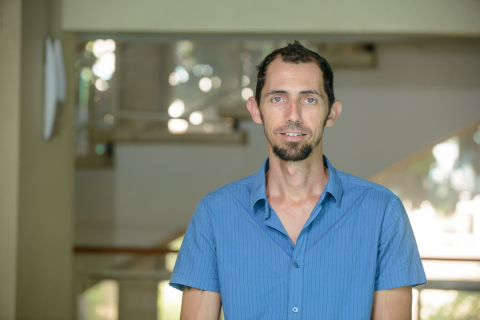
Dr. Tamir Klein
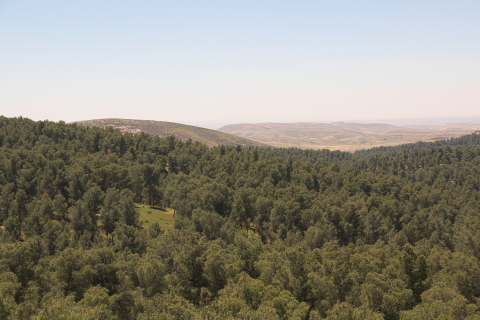
The Yatir Forest
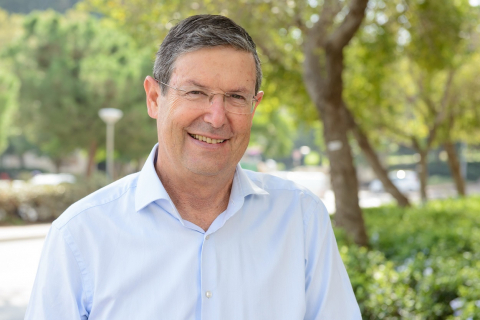
Prof. Dan Yakir
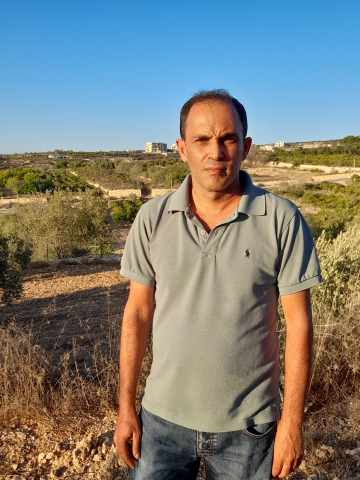
Dr. Rafat Qubaja